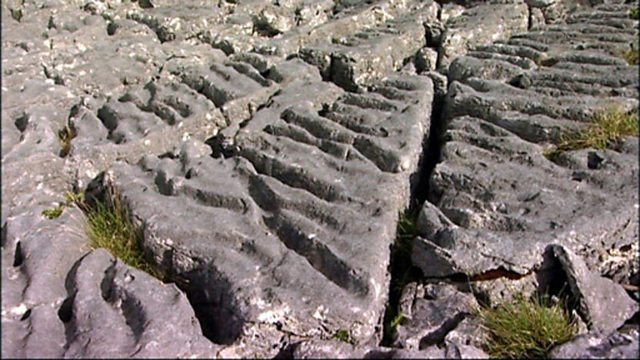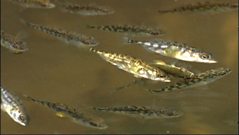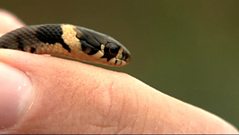
Limestone lovers
Whitbarrow's limestone creates opportunities for unusual plants.
Janet Sumner and Kerry Milligan climb to the top of Whitbarrow to see a limestone pavement. Limestone looks like solid rock but it is pretty susceptible to being dissolved away and that's the key to forming limestone pavement. Rainwater percolating through soil becomes slightly acidic over time and that acid eats into fractures in the rock. Over time it creates deep cracks called grikes and free-standing blocks of rock called clints. Whitbarrow means 'white hill' and it gets its name from the carboniferous limestone, which is full of fossils, including coral. This coral was growing in subtropical seas 350 million years ago, when Cumbria was just like the Bahamas. Rare plants such as the rigid buckle fern and the limestone fern grow in the grikes. Some of the grikes are so deep it's difficult to see what's in them without a torch. If you come here for the day, don't leave without seeing an unusual sight - standing water on limestone. Janet thinks there may be shale at the bottom of the pool keeping the water in. There are newts in the pond and, if you are there as the sun starts to go in, you'll see butterflies roosting up for the night.
Duration:
This clip is from
More clips from Summer: Moorland, Hills and Heath
-
![]()
Damsels in distress
Duration: 01:17
-
![]()
Made of muscle
Duration: 01:29
-
![]()
Dungeons of death
Duration: 02:25
-
![]()
Insecticidal thug
Duration: 00:51
More clips from Nature's Calendar
-
![]()
Bizarre behaviour—Series 1, Summer: Parks and Gardens
Duration: 01:27
-
![]()
Hot-housing sparrows—Series 1, Summer: Parks and Gardens
Duration: 01:42
-
![]()
Long-legged lovelies—Series 1, Summer: Wetland
Duration: 02:38
-
![]()
Young grass snake—Series 1, Summer: Parks and Gardens
Duration: 01:30









